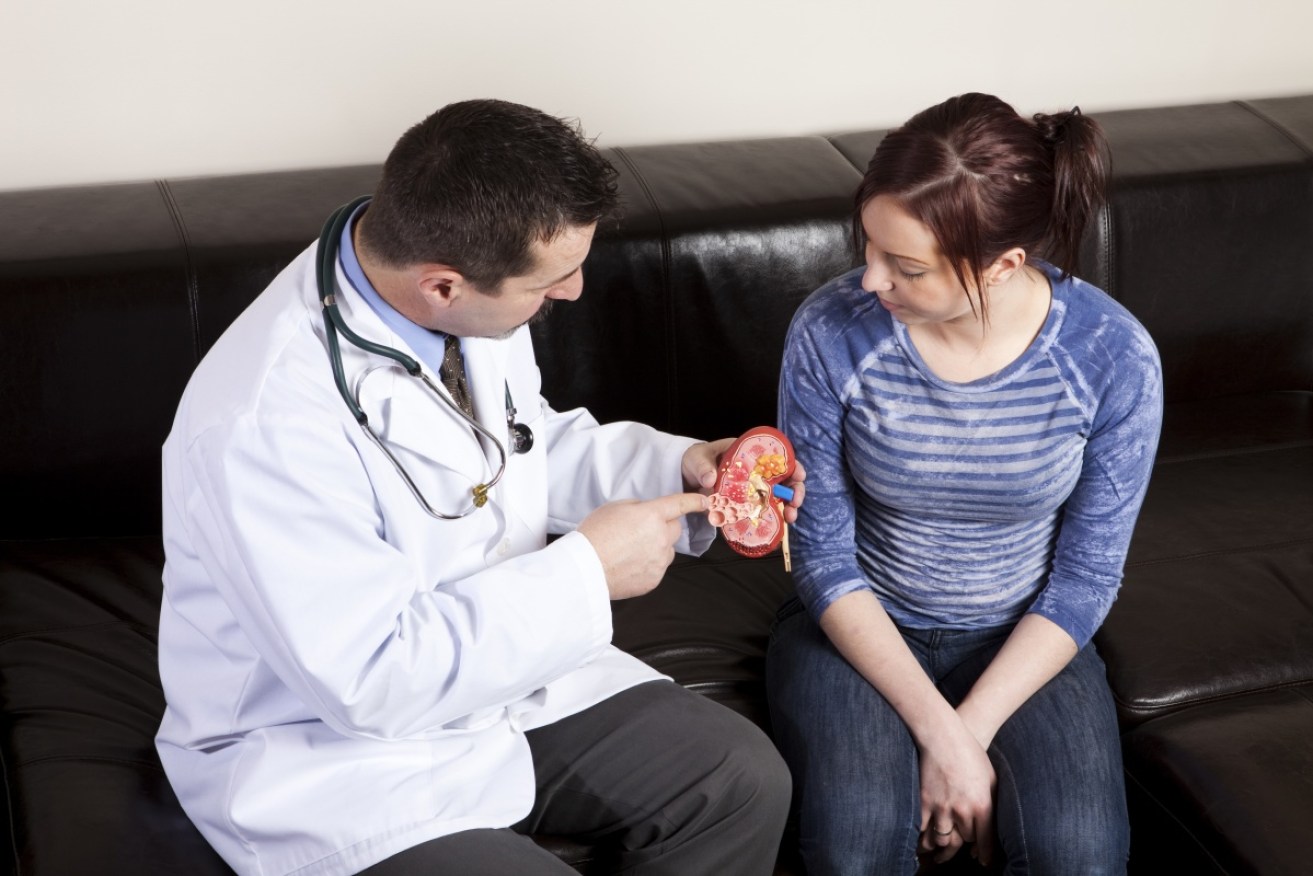Kidney disease: The ‘silent killer’ blindsiding Australians


One Australian dies every 27 minutes from kidney failure. Photo: Getty
The number of Australians who will require life-saving treatment for kidney disease is expected to skyrocket to more than quadruple Australia’s projected population growth by 2020.
In January 2017, Kidney Health Australia revealed there were 22,234 Australians on life-saving dialysis or living with a kidney transplant.
It said by 2020 this number was expected to rise to 31,589.
Nephrologists say these projections hold true because of a staggering lack of awareness of kidney disease among those who are affected.
In Australia 1.7 million people have chronic kidney disease but about 90 per cent do not know it.
Nigel Toussaint, the Deputy Director of Nephrology at The Royal Melbourne Hospital, said those affected can lose most of their kidney function without experiencing any symptoms.
“Awareness is extremely important,” Dr Toussaint said.
“You can go from 100 per cent all the way down to even 15 per cent kidney function without being aware of having any issues.”
The statistics for indigenous Australians are even more alarming with rates of kidney disease up to nine to 10 times higher than in the non-indigenous Australian population.
Kidney Health Australia interim CEO Dr Lisa Murphy said if more people checked up on their kidney function with their local doctor, Australia would likely see a drop in incidences of advanced kidney failure.
If detected early and managed appropriately, then the otherwise inevitable deterioration in kidney function can be reduced by as much as 50 per cent and may even be reversible, Dr Murphy said.
But most of the general public “don’t know where their kidneys are, or what they do, so there is a lack of understanding about how enormous the problem is,” she said.
As a consequence, the number of people with chronic kidney disease has risen by 6 per cent each year.
Called the silent killer, Dr Murphy said kidney disease can be prevented through lifestyle changes – smoking, diet, weight loss, and also good diabetic and blood pressure control.
“If people were aware of their risk factors, we would not be faced with such a huge problem.”
A young mother’s plight
At the age of 29, Megan Willoughby was blindsided by the news that her kidney function was rapidly declining and without routine dialysis, she would have only three weeks left to live.
“I didn’t think there was anything wrong with my health,” Ms Willoughby, now 36, said.
“Then all of a sudden, within three days I went from being quite well to being extremely exhausted and extremely cold.”
Ms Willoughby was born with one kidney, diagnosed with diabetes at age nine, and therefore at high risk of kidney disease.
Within three weeks, her kidney function had gone down from 23 per cent to seven per cent.
She endured nine months of gruelling dialysis before receiving a suitable donated kidney.
“It [dialysis] was like having the flu and a cold and a hangover all at once.”

Megan was one of only 64 women at the time in the world who were able to have children after a kidney (and pancreas) transplant.
Kidney Health Australia estimates that by 2020, transplant kidneys will only become available to one in four people with chronic kidney disease.
In a groundbreaking new study led by Murdoch Children’s Research Institute’s Professor Melissa Little and carried out by an Australian and Dutch team, researchers moved one step closer towards being able to treat kidney disease using a human kidney made from stem cells.
Professor Little first developed kidney tissue from stem cells in 2015, and in her new research, the Australian and Dutch teams transplanted a stem cell derived kidney organoid into a living mouse.
After four weeks of transplantation, the kidney tubules and blood vessels showed evidence of fully-developed adult kidney tissue.
“The fact that we can make kidney tissue from human stem cells and have this develop into mature kidney tissue after transplantation is a very promising step towards developing this further for treatment,” Professor Little said.
Dr Toussaint urged Australians to see their doctor about their kidney health “especially since a lot of the risk factors are unfortunately increasing in our society”.
A blood test, blood pressure check and urine test are the “three simplest and easiest ways” to look for kidney disease, he said.
Dr Murphy said early detection and referral can saves lives.
“The more Australians know their risk and check their kidneys, the higher chance we have of sparing millions of Australians from unnecessary suffering, dialysis and death,” she said.
“Don’t wait until you feel sick.”









